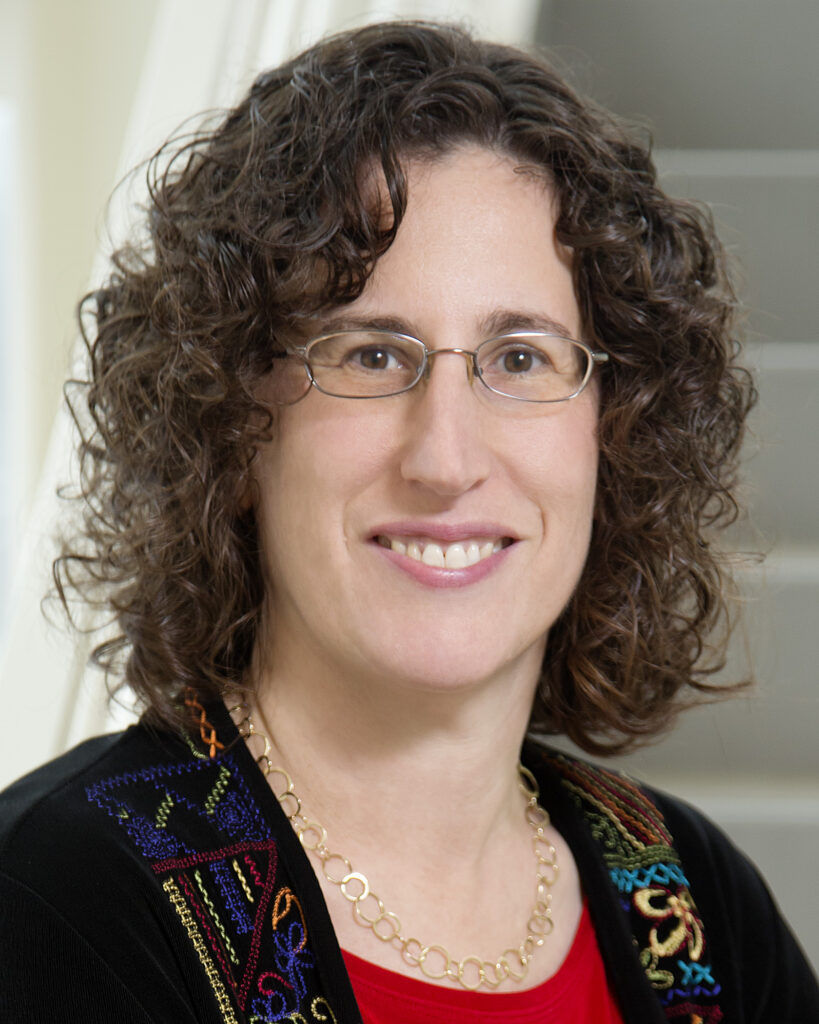Sharon Hammes-Schiffer Joins Princeton Chemistry
In an exciting addition to its senior faculty and an expansion of its research footprint in quantum science, the Department of Chemistry will welcome theoretical chemist Sharon Hammes-Schiffer as full professor in January 2024.
A summa cum laude graduate of Princeton’s Class of 1988, Hammes-Schiffer has made pioneering contributions to understanding the quantum mechanical role of the proton in molecular systems. Her work will also bolster foundational research in chemical biology, materials science, and inorganic chemistry at the department.
Hammes-Schiffer joins Princeton from her post as Sterling Professor of Chemistry at Yale University.

Professor Sharon Hammes-Schiffer, who is joining the Princeton Department of Chemistry.
“It feels a little nostalgic since I did my undergraduate work at ‘old’ Frick, but also exciting because Princeton Chemistry is just such an energetic place,” said Hammes-Schiffer. “I expect that this move will stimulate my research program because interacting with different people and different ideas leads to collaborations that, from an intellectual perspective, can be very inspirational.”
Department Chair Greg Scholes, the William S. Tod Professor of Chemistry, said, “Sharon is one of the best chemists internationally in the field of quantum chemistry, an area of great interest to our graduate students and, in fact, to Princeton. We are thrilled to have her join the department.
“Sharon’s research contributions are remarkable because of how she can communicate across disparate fields. In addition, she is very well known for her generous contribution to the chemistry community.”
Hammes-Schiffer’s lab will focus on two areas in which she has already made broad contributions: Proton-Coupled Electron Transfer (PCET), for which she developed a general theoretical formulation centered on the quantum mechanical effects of the electrons and transferring protons some 25 years ago; and nuclear-electronic orbitals methods.
“We have applied our PCET theory to a wide range of experimentally studied reactions in solution, proteins, and electrochemistry. Exploring different directions and areas within that field is certainly something we’ll continue to do at Princeton.

Hammes-Schiffer has developed a general theoretical formulation for PCET, applying this theory to a wide range of experimentally studied reactions in solution, proteins, and electrochemistry.
“Another active area of my group is something we call the NEO method, for Nuclear-Electronic Orbital,” she added. “People have been doing quantum chemistry calculations for a long time where they solve how electrons move quantum mechanically around nuclei represented as point-charges. What we do is treat some of those nuclei—protons, the lightest ones—quantum mechanically on the same level as the electrons. We are then solving a different kind of problem. Instead of just an electronic problem, it’s a mixed nuclear-electronic problem.
“We’ve been developing methods to do that, and we put those methods into codes that the whole community can use. This work really has a lot of momentum right now, so I want to keep it going, to push it to its limit and see where it can go.”
In Spectroscopy/Physical Chemistry, Hammes-Schiffer joins a research subfield that includes Robert Cava, the Russell Wellman Moore Professor of Chemistry; Assistant Professor William Jacobs; Herschel Rabitz, the Charles Phelps Smyth ’16 *17 Professor of Chemistry; Scholes; Associate Professor Leslie Schoop; Annabella Selloni, the David B. Jones Professor of Chemistry; Assistant Professor Marissa Weichman; and Professor Haw Yang.
Hammes-Schiffer is a member of the National Academy of Sciences and the American Academy of Arts and Sciences; a fellow of the American Association for the Advancement of Science; and the Editor-in-Chief of the journal Chemical Reviews, a post she has held since 2014. She is also on the Board of Reviewing Editors at the journal Science, and the Editorial Board of the Proceedings of the National Academy of Sciences.
She has won numerous awards including the Willard Gibbs Medal Award in 2021; the American Chemical Society Award in Theoretical Chemistry in 2021; and the Joseph O. Hirschfelder Prize in Theoretical Chemistry, also in 2021.
Hammes-Schiffer graduated from Princeton with a B.A. in chemistry. She earned her Ph.D. at Stanford University with theoretician Hans C. Andersen developing methods for including long-range electrostatic effects in quantum mechanical calculations on periodic systems. After that, she did postdoctoral work at AT&T Bell Laboratories in New Jersey. Hammes-Schiffer was the Clare Boothe Luce Assistant Professor of Chemistry at the University of Notre Dame from 1995 to 2000. She was at Pennsylvania State University from 2000 to 2012, with her final role there the Eberly Professor in Biotechnology. She subsequently joined the faculty at the University of Illinois at Urbana-Champaign, where she remained until moving to Yale in 2018.
Hammes-Schiffer will be moving to Princeton with her husband, Peter Schiffer, Princeton’s incoming Dean for Research. The couple has two sons, both graduates of Princeton University. She enjoys going for long walks, cooking with her family, and relaxing with a novel.
